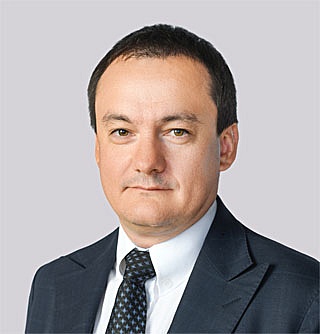Online brand protection strategies for the Russian market
19 April 2019This article first appeared in Online Brand Enforcement: Protecting Your Trademarks in the Electronic Environment 2019, a supplement to World Trademark Review, published by Globe Business Media Group - IP Division. To view the guide in full, please go to www.WorldTrademarkReview.com
Online retail offers consumers more ways to shop than ever before and purchasing habits are changing. Shoppers used to visit shopping malls to seek out goods to purchase at a price which would hopefully suit the family budget, but now online marketplaces provide shoppers with better search options, more offers, convenient home deliveries and the best prices – all accessible from anywhere in the world.
According to an eMarketer estimate, worldwide retail e-commerce sales reached $2.3 trillion in 2017 – a 24.8% increase from 2016. More and more people prefer digital shopping and the online sales-of-goods market is growing, creating new options for the quick sale of counterfeit goods to customers located in any country.
The online sale of counterfeits is a big problem for brand owners, as there are currently thousands of websites and marketplaces operating in every country through which the counterfeit goods are distributed. Increasing numbers of products are promoted and sold through major social networks such as Instagram and Facebook, as well as local social networks, all of which provide easy access to a huge number of potential customers, with no expense for advertising, storage or rental. As a result, it has become extremely difficult to control the flow of goods through the different online channels.
New challenges in a digital world dictate the necessity of adapting brand protection strategies. In the past, it was enough to deal with infringements on a case-by-case basis and instruct local lawyers to collect evidence and take necessary enforcement actions in the appropriate country to cease the infringement. However, today it is impossible to handle thousands of online infringements manually and more efficient tools (online brand protection solutions) are required.
Online brand protection solutions
The IT market provides solutions based on cutting-edge IT technologies, which allow for the detection of infringements on different online platforms (eg, marketplaces, social media, websites, mobile apps, paid search and search engines), and then structure the results by using artificial intelligence. Detected infringements can be analysed by experienced analysts or a brand protection team and any number of takedown notices can be sent to the infringers within a short time. Such solutions allow huge volumes of online infringements to be dealt with more efficiently, making it less of a burden for the in-house lawyers or brand protection managers.
The Russian e-commerce market is also growing and these same solutions are relevant for brand owners seeking to detect and fight online infringements in Russia, which is to be considered as a very specific market and all enforcement action should be taken in accordance with local laws.
According to Russian law, it is prohibited to use a trademark without the permission of the rights holder, including importing the branded goods into Russia, manufacturing, using, offering to sell, selling and other forms of marketing or storage for such purposes of a product labelled with a trademark. The Civil Code also provides that the trademark owner has the right to prohibit others from using its trademark on the Internet and in domain names (Articles 1229 and 1484 of the Civil Code). The Civil Code provides liability for the illegal use of a trademark or similar designation without the trademark owner’s consent and the latter is entitled to seek injunctive relief (eg, preliminary or permanent) and claim cessation of the infringement (eg, banning the use of the trademark), domain name revocation, domain name transfer, monetary relief (eg, damages and statutory compensation), as well as publication of the court order. The Criminal Code (Article 180) and the Code on Administrative Offences (Article 14.10) also provide liability for the infringement of trademark rights, including significant fines and confiscation of counterfeit goods.
It is often sufficient to refer to these provisions to cease a significant portion of online infringements and the success rate depends mainly on the compliance rate on a particular platform, which usually care about their reputation and tend to cooperate with brand owners to ensure the removal of offers of sale of counterfeit goods on their platforms. However, a brand protection strategy should be developed and put into place according to the type of infringement.
Domain name disputes
In case the infringement relates to the illegal use of a trademark in a domain name in the ‘.ru’, ‘.РФ’ and ‘.su’ country code top-level domains (ccTLDs), it should be noted that Uniform Domain Name Dispute Resolution Policy (UDRP) proceedings are not applicable to disputes concerning these ccTLDs and there is no similar administrative procedure which has thus far been adopted. In such a situation, a civil court action is the only remedy that can be used to enforce the transfer or cancellation of an occupied domain. In a classic domain name dispute, the trademark owner must prove each of the following:
- the trademark’s similarity to the conflicting domain name;
- the trademarked goods’ similarity to the goods offered for sale on the website under the conflicting domain name; and
- the trademark’s priority over the conflicting domain name.
In Resolution 18012/10 (18 May 2011) the Supreme Commercial Court explained that UDRP principles should be also applied by the Russian courts based on Article 10bis of the Paris Convention for the Protection of Industrial Property. In similar cases the courts should establish whether:
- the conflicting domain name is identical or confusingly similar to a trademark or service mark in which the claimant has rights;
- the respondent has no rights or legitimate interests in respect of the domain name; and
- the respondent’s domain name has been registered and is being used in bad faith.
Hundreds of domain-name disputes are successfully resolved in favour of brand owners and this option may be used in case there are no other options available to cease the infringement out of court.
ISP liability
When dealing with online infringements in Russia it should be taken into account that both the sellers of the counterfeit goods and the platforms on which they are sold can be held liable for trademark infringement. According to Russian law, marketplaces, social media, peer-to-peer networks, internet service providers (ISPs) and internet hosting providers, among others, are considered to be information intermediaries. The recently introduced Article 1253.1 of the Civil Code provides that ISPs, internet hosting providers and other information intermediaries can be held liable for IP infringements, except in cases where they can prove that:
- they did not initiate the transmission of materials;
- they did not modify materials in the transmission process;
- they were not and should not have been aware of the fact that the content is infringing; and
- on receipt of a written notice of the rights holder containing links to the infringing content, they have performed all necessary actions to cease the infringement.
If the information intermediary fails to fulfil the brand owner’s claims, it may face legal consequences and the brand owner may take action. According to the law, compensation for infringement may be claimed only from guilty information intermediaries, while the claims for removal of the infringing content or restriction of access to such content may be applied against innocent intermediaries. Thus, Russian platforms are eager to cooperate with brand owners and have helpful technical options for blocking or removing infringing content.
However, since Russia is a very particular market, better results can be achieved if brand protection actions are performed by an experienced local team due to the specificity of local language and law:
- Takedown notices must be in a local language, otherwise they may be ignored.
- Specific keywords in a local language must be used for searching for infringements.
- Local language-speaking analysts are more efficient.
- Communication with local platforms must be in a local language.
- Most local platforms have specific forms for complaints and requirements.
Online enforcement actions allow for the removal of the major part of revealed infringements online, but a 100% success rate cannot be guaranteed. Some websites or platforms may refuse to cooperate. For example, one popular argument is that the platform cannot check whether the offered goods are counterfeit or genuine and therefore seeks additional confirmation (eg, a court decision according to which particular offered goods are recognised as counterfeit). It is possible that website owners or sellers may simply ignore the takedown notices with the clear understanding that the only option to make them cease the infringement is to launch legal action that may involve additional expense for the brand owner who may subsequently think twice before taking action.
Offline enforcement actions
Although online brand protection solutions allow for the detection and removal of a major part of infringing goods, there are infringements that cannot be stopped by sending only takedown notices. In this case, the brand owner must collect evidence of the infringement and take legal action through a local lawyer. It is advisable to take action against infringers which inflict more damage to the brand. This can be decided based on information received during regular online monitoring and enforcement work.
Sometimes, it is advisable to investigate in order to gather information about the infringer, the location of its offline sales areas, shops and warehouses. During an investigation the channels of supply can also be revealed, showing the brand owner where the goods have come from and enabling action to be taken against the manufacturers at the location that is usually the main target.
The brand owner can choose the kind of legal action that it wishes to initiate. For example, police action may be recommended for immediate seizure of counterfeit products when the location of a warehouse or shop is known. Civil action may be recommended against an operating company which can pay damages (eg, if it owns property or has money in its bank account).
Customs IP registration
Customs measures are the most effective to prevent the import of counterfeit goods into Russia. Most goods sold on online platforms come from outside Russia (eg, China, Turkey and Poland). In light of this, it should be taken into account that Russia is a member of the Eurasian Economic Union, which is composed of Russia, Belarus, Kazakhstan, Armenia and Kyrgyzstan. There are no customs borders between the members, meaning that the flow of goods is outside of Customs’ control at the borders between the countries within the union. As a result, it is wise to ensure legal protection is obtained for the brand in the mentioned jurisdictions and the trademarks are recorded in the local customs IP registers, which will be replaced in the near future with a single unified customs IP register for the Eurasian Economic Union.
Customs’ efficiency is confirmed by the dynamics of the recordation of IP assets (eg, trademarks and copyrights) in the Russian Customs IP Register and their border control actions. According to Customs’ official statistics, by 18 January 2019, 4,964 trademarks were recorded; while during 2018 customs authorities revealed and seized more than 16.2 million counterfeit items.
Comment
Online brand protection solutions usually have a success rate of between approximately 60% and 80%. However, the remaining 20% to 40% of infringements may still damage the brand, since the main infringing targets could be among the remaining infringements that may be removed by taking legal steps through local lawyers (eg, litigation, and cooperation with the police, public prosecutor and customs authorities). It is clear that a comprehensive approach to brand protection both online and offline should be conducted by local brand protection service providers and lawyers to ensure the best results.
To access this website, we request that you read and accept the Terms of Use.










